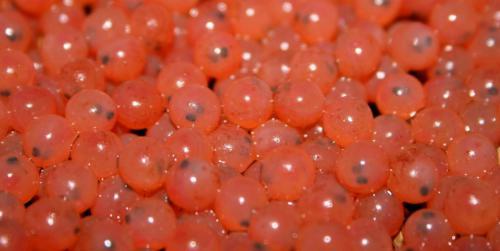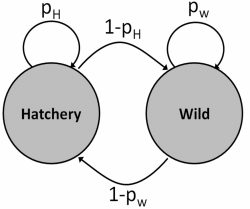Measuring the influence of hatchery fish

In a natural setting one female fish can produce thousands of eggs, yet on average only one of these eggs will become a successfully reproducing female. This creates tremendous potential for evolutionary change, especially when survival is strongly associated with genetic differences among juveniles.
Hatcheries work by improving juvenile survival, and so hatchery conditions are necessarily very different from the natural environment. Hatcheries therefore do not select against traits that are unlikely to be favored in the natural environment. When hatchery and natural-origin fish interbreed, the offspring are thus less likely to survive than offspring with two natural-origin parents.
In addition to genetic effects, hatchery and natural-origin fish can compete for limited resources. Adding more fish to an environment can therefore cause more mortality. The relative importance of genetic and demographic interactions between hatchery and natural-origin fish is complicated by many different conditions.

The REDD group developed an individual-based model that combines genetics and demographics. This model can be used to assess the performance of a mixed population of hatchery and natural-origin fish under different conditions.
Traditional guidelines for the maximum allowable proportion of hatchery-origin spawners on the spawning grounds ignore spatial and temporal aggregation of hatchery and natural-origin fish. We are developing methods to measure the influence of hatchery fish on natural-origin spawners that account for spatial and temporal aggregations of spawners, and the magnitude and timing of selection and density-dependent survival.
This work will help ODFW manage the risks and benefits of hatchery fish with greater precision.